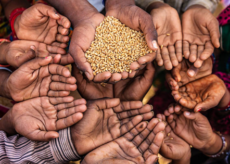Financial Inclusion Schemes: PMSBY, PMJJBY, PMJDY, SSA, APY, Suraksha Bandhan Scheme
Over last one year, government has launched various flagship social security schemes with an objective of broadening financial inclusion in India. This was done to make financial services such as banking, insurance, and others available to the Indian citizens especially from the low & middle class category at an affordable cost and make them financially secure. And lots of efforts are being taken to increase the subscribers under each of these schemes. So let’s check out the various financial inclusion schemes in the form of insurance, pension, savings account and others which were launched:
Pradhan Mantri Suraksha Bima Yojana:
Considered to be the cheapest accidental death cum disability insurance policy with an annual premium of just Rs. 12, it has received a massive positive response from most of the Indians. Although the insurance cover is small which is Rs. 2, 00, 000 for accidental death and Rs. 1, 00, 000 for partial disability but considering the fact that nearly 80% of the country’s population do not have any insurance, the scheme has evoked a very good response as it will further increase the insurance penetration to the remotest locations of India. Till now, due to high annual premium by private insurance companies not everyone was able to buy policy. But this has become possible with Suraksha Bima. Get to know the details of PMSBY.
Pradhan Mantri Jeevan Jyoti Bima Yojana:
Similar to PMSBY, PMJJBY is also the cheapest life insurance policy with an annual premium of Rs. 330 and moreover it does not require medical examination. The cover offered under the yojana is Rs. 2, 00, 000 and the termination of policy takes place after the policy holder reaches the age of 55 years.
Objective of both PMJJBY and PMSBY is to provide financial security to the family of policy holder in an event of his/her death.
Atal Pension Yojana:
This pension scheme was launched with a sole purpose of providing pension to the workers from unorganized sector after the retirement to meet their daily needs. Contribution can be done monthly/quarterly/every 6 month and equal amount will be contributed by the government of India with an option to prematurely exit from the scheme before the age of 60 years. Pension amount receivable would be in the range of Rs. 1,000-Rs.5, 000. Detailed information on APY is available here.
Jeevan Suraksha Bandhan Yojana:
This scheme is a Raksha Bandhan gift and is launched with an objective to drive PMSBY and PMJJBY. Through this yojana, brothers can gift social security schemes to their sisters by purchasing gift card worth Rs. 351 and deposit scheme worth Rs. 201 which will be used for making the premium payment for Suraksha Bima Yojana and Jeevan Jyoti Bima Yojana. Apart from this, term deposit scheme worth Rs. 5001 can also be taken which will serve two purposes – premium payment for PMSBY and PMJJBY for the first year and remaining money would be investment for term deposit for 10 years. Read details of Suraksha Bandhan Yojana.
Pradhan Mantri Jan Dhan Yojana:
Opening zero balance saving account for every unbanked Indian household was the main objective behind the launch of PMJDY. Overdraft facility of Rs. 5,000 is also available provided the account is kept active for 6 months after opening. Some banks are also opening account to existing customers whereas majority of them have restricted to only those with no bank account. Explore features of PMJDY.
Sukanya Samriddhi Yojana:
With a mission to secure the financial future of the girl child, this small savings scheme SSA – was launched under the Beti Padhao Beti Bachao initiative. For the current year i.e. 2015-2016, the interest rate offered is 9.2%. For e.g. in this scheme if you invest Rs. 20,000 for 14 years, the maturity amount will be Rs. 10, 67, 528 (assuming 9.2% interest). Check out table containing investment amount and maturity amount for SSA.
Parents or local guardians can open account in the name of the girl child at post offices or various banks designated by Reserve Bank of India. Moreover the interest income and investments are eligible for tax deduction under section 80C of Indian income tax act, 1961 and the scheme matures once the girl child reaches the age of 21 years. For opening the account, initial deposit of Rs. 1,000 has to be made. And next year onwards, deposit can be made for amount ranging from Rs. 100 to Rs. 1, 50, 000. Premature withdrawal is possible only when girl gets married before the maturity. The interest rate would be declared by the government every year. When the scheme was launched in the year 2014-2015, the interest offered was 9.1%.
It is now our duty to further spread the awareness of these schemes so that Indians located in remotest places can get basic access to financial services at an affordable rate.



